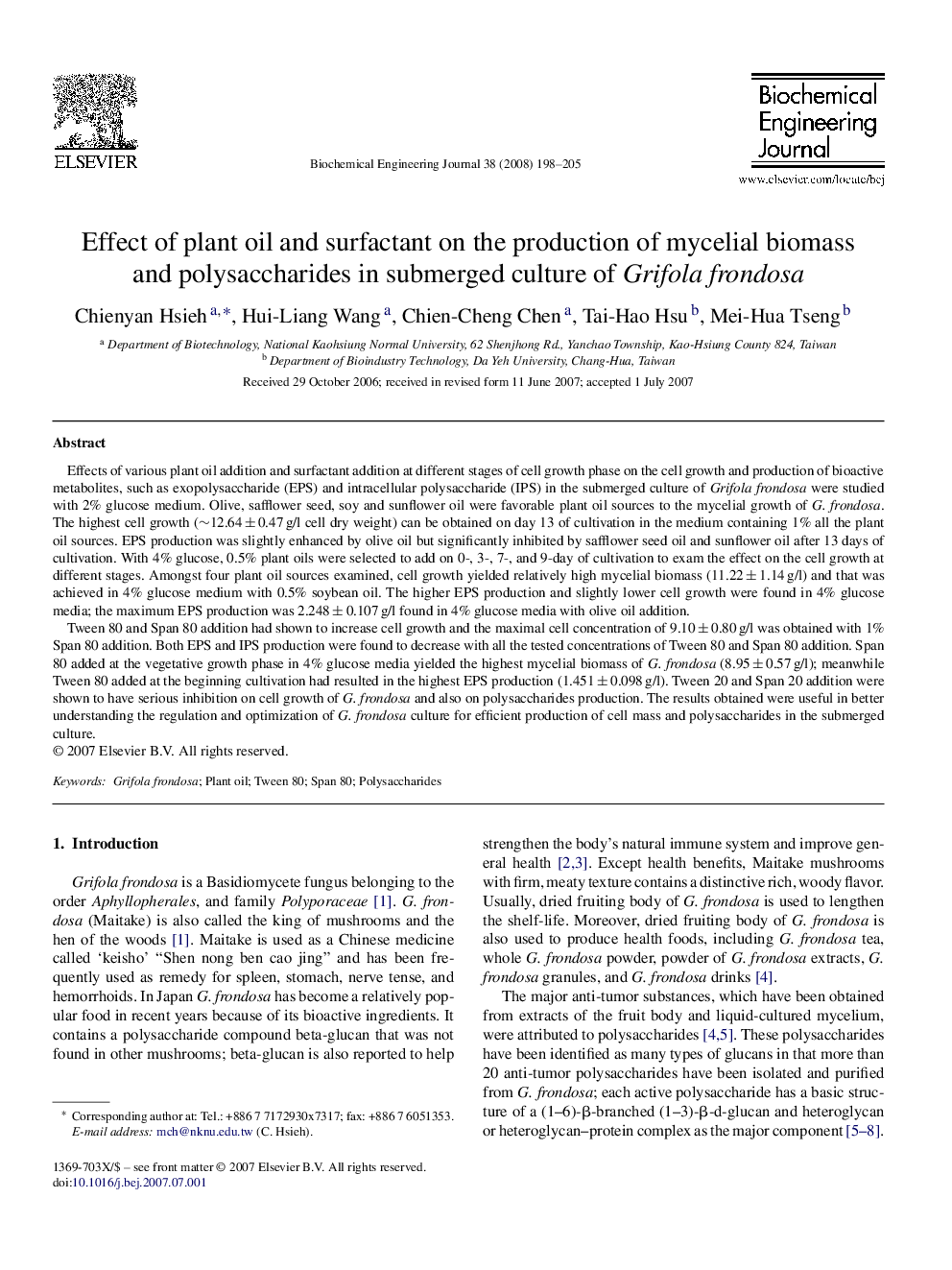| کد مقاله | کد نشریه | سال انتشار | مقاله انگلیسی | نسخه تمام متن |
|---|---|---|---|---|
| 4567 | 232 | 2008 | 8 صفحه PDF | دانلود رایگان |

Effects of various plant oil addition and surfactant addition at different stages of cell growth phase on the cell growth and production of bioactive metabolites, such as exopolysaccharide (EPS) and intracellular polysaccharide (IPS) in the submerged culture of Grifola frondosa were studied with 2% glucose medium. Olive, safflower seed, soy and sunflower oil were favorable plant oil sources to the mycelial growth of G. frondosa. The highest cell growth (∼12.64 ± 0.47 g/l cell dry weight) can be obtained on day 13 of cultivation in the medium containing 1% all the plant oil sources. EPS production was slightly enhanced by olive oil but significantly inhibited by safflower seed oil and sunflower oil after 13 days of cultivation. With 4% glucose, 0.5% plant oils were selected to add on 0-, 3-, 7-, and 9-day of cultivation to exam the effect on the cell growth at different stages. Amongst four plant oil sources examined, cell growth yielded relatively high mycelial biomass (11.22 ± 1.14 g/l) and that was achieved in 4% glucose medium with 0.5% soybean oil. The higher EPS production and slightly lower cell growth were found in 4% glucose media; the maximum EPS production was 2.248 ± 0.107 g/l found in 4% glucose media with olive oil addition.Tween 80 and Span 80 addition had shown to increase cell growth and the maximal cell concentration of 9.10 ± 0.80 g/l was obtained with 1% Span 80 addition. Both EPS and IPS production were found to decrease with all the tested concentrations of Tween 80 and Span 80 addition. Span 80 added at the vegetative growth phase in 4% glucose media yielded the highest mycelial biomass of G. frondosa (8.95 ± 0.57 g/l); meanwhile Tween 80 added at the beginning cultivation had resulted in the highest EPS production (1.451 ± 0.098 g/l). Tween 20 and Span 20 addition were shown to have serious inhibition on cell growth of G. frondosa and also on polysaccharides production. The results obtained were useful in better understanding the regulation and optimization of G. frondosa culture for efficient production of cell mass and polysaccharides in the submerged culture.
Journal: Biochemical Engineering Journal - Volume 38, Issue 2, 15 February 2008, Pages 198–205